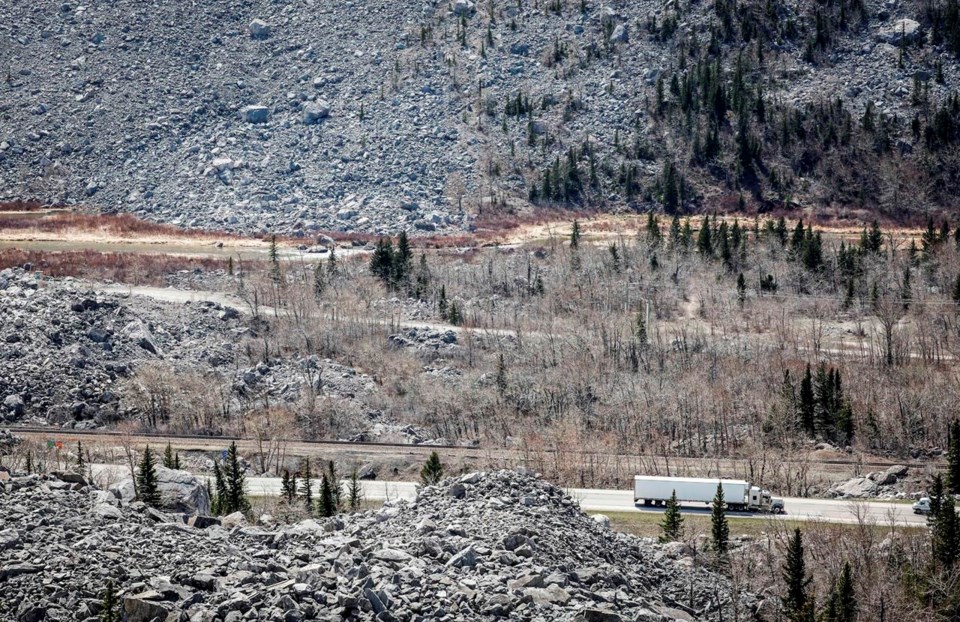EDMONTON ‚Äî A former coal mine in the Alberta Rockies is releasing a contaminant toxic to fish at rates more than dozens of times higher than federal and provincial guidelines, while another periodically disgorges water so iron-heavy it stains local creeks orange, research says.¬Ý
The findings, by provincial government scientists who were not made available to speak to reporters, raise questions about who is responsible for cleaning up legacy industrial sites.¬Ý
"Our results reveal novel evidence that coal mining activities in the Crowsnest River watershed have been impacting ecosystems downstream for decades," says the paper, published recently in the journal Environmental Pollution.¬Ý
Its three authors, all employed by Alberta Environment and Protected Areas when the research was conducted, studied the Grassy Mountain and Tent Mountain sites in southwestern Alberta.¬Ý
Both sites have seen significant, though intermittent, coal mining. Grassy Mountain had surface and underground activity from 1910 to 1975 and Tent Mountain was surface mined from 1948 to 1983.
Operations at Tent Mountain, now the site of a proposed renewable energy project, piled decades of waste rock adjacent to a retention pond feeding water into the Crowsnest River.¬Ý
"A network of rill marks evident down the face of the waste rock pile attest to the long-term movement of surface water down (and through) the waste rock pile and directly into Pond 3A," the paper says.¬Ý
That pond now has concentrations of selenium ‚Äî an element highly toxic to fish, impairing their ability to reproduce ‚Äî that range from 112 to 185 micrograms per litre.¬Ý
The governments of Canada, the United States and Alberta say the safe limit for selenium to protect aquatic life is between one and two micrograms.¬Ý
Pond 3A drains into Crowsnest Creek, which runs through a wetland at the base of Tent Mountain. Much of the selenium stays there.
"Selenium bioaccumulates in aquatic habitats and can be toxic to fish and wildlife at the concentrations observed," says the paper.¬Ý
Downstream of that wetland, just before the creek flows into Crowsnest Lake, selenium concentrations were still at or above upper limits, sometimes four times the Alberta guideline.¬Ý
The paper says selenium in the lake is elevated compared with unaffected streams in the area.
Grassy Mountain, where one company hopes to restart coal mining, is creating fewer selenium concerns because waste rock is more widely dispersed, says the paper. But in July 2022, the scientists noted a problem in a nearby creek.¬Ý
"For a brief 48-hour period, water quality in Blairmore Creek changed markedly and the water turned a rusty orange colour," the paper says.¬Ý
The team tracked the rusty water to an old mine entrance and measured its iron content at nearly 30 times federal guidelines. ¬Ý
"This discharge event was presumably due to an unknown (natural) hydrologic driver," says the paper. "Periodic orange-water discharge events have been noted since the 1970s."¬Ý
The Canadian Press contacted Alberta Environment on Jan. 15 to request an interview with the authors, two of whom remain public employees.
A spokesman said the scientists weren't available and asked for a list of questions. A list was provided Friday, but no response was received, including to a question about why the scientists couldn't speak to their research.¬Ý
The third author, now working in the U.S., said he wouldn't talk about his research for fear of legal reprisal from the province.¬Ý
In Alberta, the possessors of a development permit for a site are responsible for previous environmental liabilities.¬Ý
Tent Mountain is currently covered by a permit owned by Evolve Power, which hopes to use Pond 3A for water storage in a pumped hydro project.¬Ý
Evolve did not respond to a request to comment on how it plans to remediate selenium concerns.
The previous permit holder, Montem Resources, did have a plan to remediate selenium from its proposed coal mine, but it's not clear how, or if, the plan applies to the current project. ¬Ý
Grassy Mountain is currently being explored for coal by Australian-owned Northback Resources, which hopes to reopen the site for mining.¬Ý
Federal law prohibits the discharge of materials "deleterious to fish" into fish-bearing waters. The creeks flowing from both sites are the headwaters of many trout streams, including endangered native species, which already face threats from infections such as whirling disease.¬Ý
"(Environment Canada) is aware of the historical coal mines at Grassy Mountain and Tent Mountain and has conducted multiple inspections at the Grassy Mountain mine," said spokeswoman Nicole Allen in an email.
"If … enforcement officers find evidence of an alleged violation of the pollution prevention provisions of the Fisheries Act, they will take appropriate action."
This report by The Canadian Press was first published Jan. 30, 2024.
Bob Weber, The Canadian Press



